Postgresql Change Column Type
Casting Columns in PostgreSQL for Type Changes
One of the simplest ways to change the type of a column in PostgreSQL is by using casting. It involves converting the data in the column from one type to another without altering the structure of the table. PostgreSQL provides several casting functions, such as `::`, `CAST()`, and `CONVERT()`, that can be used for type conversion. For example, to change a column named `is_active` from boolean to integer, you can use the following query:
“`
ALTER TABLE table_name
ALTER COLUMN is_active TYPE integer
USING is_active::integer;
“`
Alterations with the USAGE Privilege
By default, only the owner of a table and superusers have the privilege to alter columns. To allow other users to perform such alterations, the owner can grant the `USAGE` privilege on the specific column using the `GRANT` statement. Here’s an example of granting the privilege to a user named `user1`:
“`
GRANT USAGE ON TABLE table_name TO user1;
“`
Using the ALTER TABLE Statement for Type Alterations
The `ALTER TABLE` statement is a powerful command in PostgreSQL that allows you to modify table structures. When it comes to changing column types, the `ALTER TABLE` statement provides the `ALTER COLUMN` clause. This clause allows you to change the type of a column directly. For example, to change a column named `age` from integer to smallint, you can use the following query:
“`
ALTER TABLE table_name
ALTER COLUMN age TYPE smallint;
“`
Modifying Column Types with the SET DATA TYPE Command
Another way to change column types in PostgreSQL is by using the `SET DATA TYPE` command. This command is useful when you want to change the type of a column along with its constraints, default values, and collation. For instance, to change a column named `price` from numeric(10,2) to decimal(12,2), you can execute the following query:
“`
ALTER TABLE table_name
ALTER COLUMN price SET DATA TYPE decimal(12,2);
“`
Updating Column Types and Preserving Data Using TYPE CAST
Sometimes, changing the type of a column may result in data loss or unexpected behavior. In such cases, PostgreSQL provides the `TYPE CAST` syntax, which allows you to explicitly cast the column’s data while changing its type. This ensures the preservation of data integrity. Here’s an example of changing the type of a column named `birthdate` from character varying to date using `TYPE CAST`:
“`
ALTER TABLE table_name
ALTER COLUMN birthdate TYPE date
USING birthdate::date;
“`
Applying Constraints on Column Type Alterations
When changing the type of a column, it is essential to consider any constraints associated with that column. PostgreSQL automatically converts any constraints that are compatible with the new type. However, constraints with incompatible types may lead to errors during the alteration. Therefore, it’s advisable to review and modify constraints accordingly before changing the column type.
Changing Column Types with the USING Clause
The `USING` clause is a useful addition to the `ALTER TABLE` statement that allows you to specify a custom expression to transform the data during a type alteration. This can come in handy when the casting functions alone are not sufficient. Here’s an example of changing a column named `rating` from integer to decimal using the `USING` clause:
“`
ALTER TABLE table_name
ALTER COLUMN rating TYPE decimal
USING (rating / 10.0);
“`
Handling Type Conversion Errors and Considerations
Changing the type of a column can be a complex operation, especially when dealing with large tables or sensitive data. It’s crucial to consider potential errors during the type conversion process and handle them appropriately. Validating the data, creating backups, and testing the alterations on a smaller scale can help mitigate potential issues.
Impact of Type Changes on Indexes and Performance
Changing the type of a column in PostgreSQL can have implications on the existing indexes, query performance, and application behavior. Altering the data type of a column used in an index may require rebuilding the index, which can be time-consuming for large tables. Additionally, queries relying on the old column type may need to be modified to adapt to the new type. Therefore, thorough testing and monitoring of performance metrics are recommended after altering column types.
Best Practices for Changing Column Types in PostgreSQL
To ensure a smooth and successful type alteration in PostgreSQL, it is advisable to follow these best practices:
1. Analyze and understand the implications of the type change before executing it.
2. Backup the database before performing any alterations, especially on production environments.
3. Test the type alteration on a copy of the database or on a smaller scale to identify potential issues.
4. Review and modify constraints, indexes, queries, and application code that depend on the column being altered.
5. Monitor and benchmark the performance of the system after the type change to identify any bottlenecks or regressions.
Frequently Asked Questions (FAQs)
Q: Can I change a column from boolean to integer in PostgreSQL?
A: Yes, you can change a column from boolean to integer using casting or the `ALTER TABLE` statement with the `ALTER COLUMN` clause.
Q: Why do I receive an error when trying to alter the type of a column used by a view or rule?
A: PostgreSQL does not allow altering the type of a column if it is used by a view or rule. You need to drop or modify the views and rules that depend on the column before altering its type.
Q: How can I change a column’s type to float in PostgreSQL?
A: To change a column to the float data type, you can use the `ALTER TABLE` statement with the `ALTER COLUMN` clause and specify the `TYPE` as float.
Q: Can I delete a column in PostgreSQL?
A: Yes, you can delete a column from a PostgreSQL table using the `ALTER TABLE` statement with the `DROP COLUMN` clause.
Q: How do I change a column’s type from varchar to date in PostgreSQL?
A: To change a column from varchar to date, you can use casting or the `ALTER TABLE` statement with the `ALTER COLUMN` clause and specify the `TYPE` as date.
Q: How do I change a column’s type from integer to bigint in PostgreSQL?
A: To change a column from integer to bigint, you can use casting or the `ALTER TABLE` statement with the `ALTER COLUMN` clause and specify the `TYPE` as bigint.
In conclusion, changing column types in PostgreSQL involves various techniques and considerations. Whether you use casting, the `ALTER TABLE` statement, the `SET DATA TYPE` command, or the `USING` clause, it is crucial to understand the implications, handle constraints and potential errors, and follow best practices. By carefully managing column type alterations, you can ensure the integrity of your database and avoid any unintended consequences.
Table Rename ,Column Rename And Change Data Type Column In Database Postgresql.
How To Change Column Type In Postgresql?
PostgreSQL, an open-source relational database management system, offers a wide range of data types to efficiently store and manipulate data. However, as requirements change, it may become necessary to modify the data types of columns within tables. In this article, we will explore various techniques to change the column type in PostgreSQL, ensuring smooth and effective transitions while maintaining data integrity.
Changing Column Type Using the ALTER TABLE Command:
One of the most fundamental and convenient ways to change the column type in PostgreSQL is through the ALTER TABLE command. The ALTER TABLE command allows you to modify the structure of an existing table.
To change the data type of a column using ALTER TABLE, follow these steps:
Step 1: Connect to your PostgreSQL database.
Step 2: Execute the ALTER TABLE command followed by the name of the table:
“`
ALTER TABLE table_name
“`
Step 3: Add the ALTER COLUMN clause with the name of the column you want to modify:
“`
ALTER COLUMN column_name
“`
Step 4: Specify the new data type for the column using the SET DATA TYPE clause:
“`
SET DATA TYPE new_data_type;
“`
For example, let’s consider a table called employees with a column named salary of data type integer. To change the data type of the salary column to numeric, you would execute the following SQL statement:
“`
ALTER TABLE employees
ALTER COLUMN salary
SET DATA TYPE numeric;
“`
Changing Column Type Using the CREATE TABLE AS Command:
Another approach to change column types is to create a new table with the desired column types and then copy the data from the existing table to the new one. This method allows for more advanced modifications while avoiding potential data loss.
To change the column type using the CREATE TABLE AS command, follow these steps:
Step 1: Create a new table with the desired column types:
“`
CREATE TABLE new_table_name AS
SELECT column1, column2, CAST(column3 AS new_data_type) AS column3,
…
FROM old_table_name;
“`
Step 2: Transfer any additional constraints, indexes, triggers, or foreign keys to the new table.
Step 3: Rename the new table to match the original table:
“`
ALTER TABLE old_table_name RENAME TO old_table_name_backup;
ALTER TABLE new_table_name RENAME TO old_table_name;
“`
For example, let’s assume we have a table called customers with a column named birthdate of type text. To change the column type to date, the following SQL statements would be executed:
“`
CREATE TABLE customers_new AS
SELECT customer_id, first_name, last_name, CAST(birthdate AS date) AS birthdate
FROM customers;
— Transfer any additional constraints, indexes, triggers, or foreign keys if necessary.
ALTER TABLE customers RENAME TO customers_backup;
ALTER TABLE customers_new RENAME TO customers;
“`
FAQs:
Q: Can I change the column type without losing data?
A: Yes, PostgreSQL provides methods such as using the ALTER TABLE command or the CREATE TABLE AS command to change column types without data loss. However, it is essential to ensure data integrity and consider potential implications before making any changes.
Q: What happens if I change a column type that contains data?
A: When the column type is changed, PostgreSQL automatically performs a data conversion if possible. However, you should be cautious as type conversions may lead to data loss or unexpected results. It is recommended to take backups or test the changes in a non-production environment before applying them to live data.
Q: Are there any limitations when changing column types in PostgreSQL?
A: Yes, there are some limitations when changing column types. For instance, changing the data type of a column may fail if the table has a primary key or unique constraint that depends on the column being modified. In such cases, you may need to drop or alter those constraints before modifying the column type.
Q: Can I change the column type of multiple columns at once?
A: Yes, you can modify multiple columns simultaneously by including them inside a single ALTER TABLE statement. For example:
“`
ALTER TABLE table_name
ALTER COLUMN column1 SET DATA TYPE new_data_type1,
ALTER COLUMN column2 SET DATA TYPE new_data_type2,
…
“`
In conclusion, PostgreSQL offers multiple ways to change the column type effectively, providing flexibility in adapting to changing data requirements. Whether using the ALTER TABLE command or the CREATE TABLE AS command, always be cautious when modifying column types to avoid data loss or unexpected results. By following the steps outlined in this article and understanding the FAQ section, you can successfully change column types in PostgreSQL while ensuring the integrity of your data.
How To Change Column Type And Set Default In Postgres?
PostgreSQL, commonly known as Postgres, is a powerful open-source relational database management system. It offers a wide range of features and supports various data types and structures. In this article, we’ll explore how to change column types and set default values in Postgres.
Changing column types in Postgres:
There may be occasions when you need to alter the data type of a column in a table. Postgres provides the ALTER TABLE statement, which allows you to modify the structure of an existing table. To change the data type of a column, you can use the ALTER TABLE statement with the ALTER COLUMN clause and the TYPE keyword followed by the desired data type.
Here’s the syntax:
ALTER TABLE table_name ALTER COLUMN column_name TYPE new_data_type;
For example, if you want to change the data type of the “age” column in the “users” table from integer to numeric, you can execute the following query:
ALTER TABLE users ALTER COLUMN age TYPE numeric;
Keep in mind that when changing the data type, you should ensure that the new type is compatible with the existing data in the column. Otherwise, you may encounter errors or unexpected behavior.
Setting default values in Postgres:
In some cases, you might need to assign default values to columns so that if no explicit value is provided during an insert operation, the column will automatically be populated with the default value. Postgres provides the DEFAULT keyword to set default values for columns.
To set a default value for a column, you can again use the ALTER TABLE statement with the ALTER COLUMN clause and the SET DEFAULT keyword followed by the default value.
Here’s the syntax:
ALTER TABLE table_name ALTER COLUMN column_name SET DEFAULT default_value;
For example, if you want to set the default value of the “status” column in the “orders” table to “pending”, you can execute the following query:
ALTER TABLE orders ALTER COLUMN status SET DEFAULT ‘pending’;
It’s worth mentioning that existing rows will not be affected by this change. The default value will only be used for new or inserted rows where the column is not explicitly mentioned.
FAQs:
Q: Can I change the data type of a column that contains data?
A: Yes, you can change the data type of a column that contains data. However, you need to ensure that the new data type is compatible with the existing data. You may need to perform data type conversions or modify the data as necessary.
Q: What happens to the existing data when the column type is changed?
A: When you change the data type of a column, Postgres attempts to convert the existing data to the new type. However, if the conversion is not possible, an error will be thrown. Therefore, it’s crucial to validate the existing data and ensure that the conversion can be performed safely.
Q: How can I change the default value of a column?
A: To change the default value of a column, you can use the ALTER TABLE statement with the ALTER COLUMN clause and the SET DEFAULT keyword followed by the new default value.
Q: Can I remove the default value of a column?
A: Yes, you can remove the default value of a column by using the ALTER TABLE statement with the ALTER COLUMN clause and the DROP DEFAULT keyword.
Q: Are there any limitations in changing column types or default values?
A: While changing column types and setting default values are common operations, there may be limitations depending on the specific data types involved. For example, changing a column with existing foreign key references or modifying the default of a column used in constraints may require additional considerations.
In conclusion, Postgres provides robust capabilities to alter column types and set default values. Using the ALTER TABLE statement with the ALTER COLUMN clause, you can easily modify the structure of your tables. However, it’s crucial to be cautious when changing column types to ensure compatibility with existing data, and consider any potential limitations based on your specific database setup.
Keywords searched by users: postgresql change column type Change column type postgresql boolean, Postgresql change column type to integer, Cannot alter type of a column used by a view or rule, PostgreSQL change column type to float, ALTER TABLE change column type, Delete column postgres, Postgresql change column type from varchar to date, Postgresql change column type from integer to bigint
Categories: Top 79 Postgresql Change Column Type
See more here: nhanvietluanvan.com
Change Column Type Postgresql Boolean
PostgreSQL is a powerful and versatile open-source relational database management system (RDBMS) widely used for data storage and retrieval. One of the tasks in managing a database involves altering the structure of a table, including changing the data type of a column. In this article, we will explore the process of changing the column type in PostgreSQL from boolean to English. We will cover the necessary steps and considerations, along with a FAQ section to address common queries regarding this topic.
To begin with, let’s understand the necessity and implications of changing the column type from boolean to English in PostgreSQL. Boolean data type in PostgreSQL allows data to be stored as either true or false. However, in certain scenarios, it might be more meaningful to store data in English terms instead. For example, if a boolean column represents a status, such as ‘active’ or ‘inactive’, it is more intuitive for users to comprehend and work with English terms. Therefore, changing the column type to English can enhance readability and usability.
Now, let’s dive into the steps involved in changing column type in PostgreSQL from boolean to English:
1. Backup the database: Before making any significant modifications, it is crucial to create a backup of the database. This acts as a safety net, enabling you to revert to the original state if any issues arise during the process.
2. Alter the column type: Once the backup is secured, you can proceed to change the column type. The ALTER TABLE statement in PostgreSQL allows you to modify table structures. In this case, we need to alter the column type to be of character data type. The following query can be used for this purpose:
“`
ALTER TABLE table_name
ALTER COLUMN column_name TYPE character varying;
“`
Ensure that you replace `table_name` with the actual name of the table and `column_name` with the name of the column you want to modify.
3. Update column values: After altering the column type, you need to update the column values to English terms. This involves executing a series of UPDATE statements based on the previous values and the desired English equivalents. For example, if the previous boolean values were ‘true’ and ‘false’, you would update them to ‘active’ and ‘inactive’ respectively. The UPDATE statement can be written as follows:
“`
UPDATE table_name
SET column_name = ‘new_value’
WHERE column_name = ‘old_value’;
“`
Replace `table_name` with the table name, `column_name` with the corresponding column name, `new_value` with the desired English term, and `old_value` with the previous boolean value.
4. Validate and test: After updating the column values, it is essential to validate the changes made and perform extensive testing. This includes examining data consistency, executing queries on the modified column, and ensuring the overall functionality of the database is unaffected. Validating and testing help ensure the integrity of the modified column and prevent any potential issues.
Frequently Asked Questions (FAQs):
Q1. Can I change the column type from boolean to English directly without modifying the values?
A1. No, it is not possible to change the column type directly without updating the values. PostgreSQL requires the values to be of the appropriate data type to ensure data integrity.
Q2. What are the potential risks associated with changing the column type?
A2. While altering the column type, there is always a risk of data loss or inconsistency if the process is not carefully executed. It is recommended to perform a database backup before making any structural modifications to mitigate such risks.
Q3. Are there any limitations in changing the column type from boolean to English?
A3. The limitations primarily depend on the specific requirements of your application. However, it’s crucial to ensure that the English terms chosen accurately represent the previously boolean values and that the new data type supports all the desired operations.
Q4. What if I already have constraints defined on the boolean column?
A4. If there are constraints defined on the boolean column, such as NOT NULL or UNIQUE constraints, you must drop those constraints before altering the column type. After the modification, you can recreate the constraints to ensure data integrity.
In conclusion, changing the column type from boolean to English in PostgreSQL involves altering the table structure, updating the column values, and performing comprehensive validation and testing. While this process requires careful planning and execution, it can significantly enhance the usability and readability of the database. By following the steps outlined in this article and addressing FAQs, you can successfully accomplish this task and adapt your database to the specific needs of your application.
Postgresql Change Column Type To Integer
Changing the data type of a column in PostgreSQL can be a straightforward process if performed correctly. Here’s a step-by-step guide on how to change a column type to an integer:
Step 1: Identify the table and column
Start by identifying the table and the specific column you wish to modify. For example, let’s consider a table named “employees” with a column called “age” that needs to be converted to an integer type.
Step 2: Backup your data
Before making any changes, it is always advisable to create a backup of your data. This step ensures that you have a safety net in case anything goes wrong during the process.
Step 3: Verify the current data type
To ensure that the column you want to change is indeed of a different data type, you should verify its current data type. You can do this by using the following command:
“`
\d+ table_name
“`
Replace `table_name` with the actual name of the table you are working with. The above command will display the details of the table, including the data types of its columns.
Step 4: Create a temporary table
Next, create a temporary table with the desired data type for the column. In our case, since we want to convert the “age” column to an integer, we will create a temporary table with the “age” column defined as an integer. Here’s an example:
“`
CREATE TABLE temp_employees AS SELECT column1, column2, CAST(age AS integer) AS age, column4 FROM employees;
“`
Make sure to replace “column1”, “column2”, and “column4” with the actual names of the columns in your table. The above command selects all columns from the original “employees” table while converting the “age” column to an integer using the `CAST` function. It then stores the result in a temporary table named “temp_employees”.
Step 5: Rename and drop the original table
Renaming the original table and dropping it later will allow you to replace it with the temporary table containing the updated column type. Execute the following commands:
“`
ALTER TABLE employees RENAME TO old_employees;
ALTER TABLE temp_employees RENAME TO employees;
DROP TABLE old_employees;
“`
The above commands rename the original “employees” table to “old_employees”, renames the temporary table “temp_employees” to “employees”, and finally drops the old table.
Step 6: Verify the new column type
To confirm that the column type has been changed successfully, run the `\d+ employees` command again. It should display the updated details of the “employees” table, with the “age” column now being of integer type.
Now that we have covered the process of changing a column type to an integer, let’s move on to addressing some frequently asked questions regarding this topic:
FAQs:
Q1: Will changing the column type affect my data?
Changing the column type should not cause any data loss or corruption. However, it is always recommended to create a backup before making any changes, as a safety precaution.
Q2: Can I change the column type if the table has data?
Yes, you can change the column type even if the table contains data. PostgreSQL will automatically convert the existing data to fit the new column type, as long as the conversion is possible.
Q3: What happens if the column contains non-numeric values when converting to an integer?
When converting a column to an integer type, PostgreSQL expects the values to be numeric. If the column contains non-numeric values, such as text or non-finite numbers, the conversion will fail, and you will need to take appropriate measures to handle such cases.
Q4: Do I need to update my queries after changing the column type?
In most cases, changing the column type should not require updating your queries, as PostgreSQL handles the type conversion automatically. However, it is always a good practice to review your queries and ensure they work as expected with the new column type.
Q5: Are there any performance implications after changing a column type?
Changing a column type should not have a significant impact on performance. However, it is essential to consider the size and distribution of the data in the column, as it may affect query performance if not properly managed.
In conclusion, PostgreSQL provides a solid foundation for managing diverse data types efficiently. Changing the column type to an integer is a straightforward process that involves creating a temporary table with the desired type and then replacing the original table with it. By following the step-by-step guide provided in this article and considering the frequently asked questions, you can confidently modify column types in PostgreSQL without compromising your data integrity.
Images related to the topic postgresql change column type

Found 12 images related to postgresql change column type theme

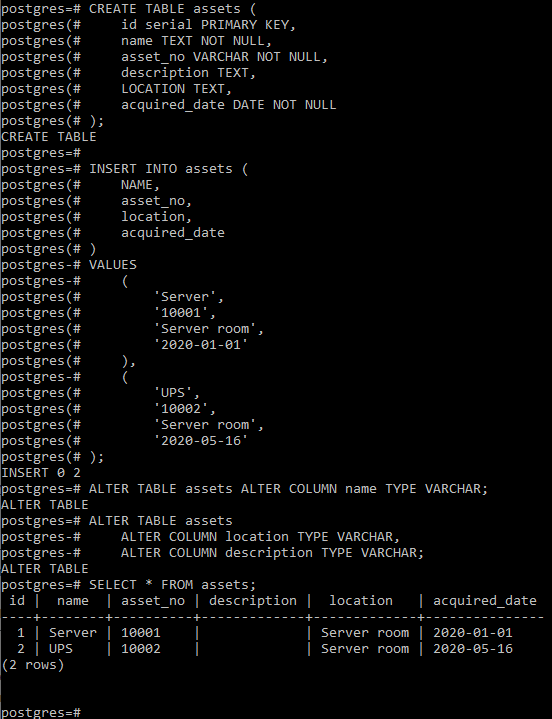
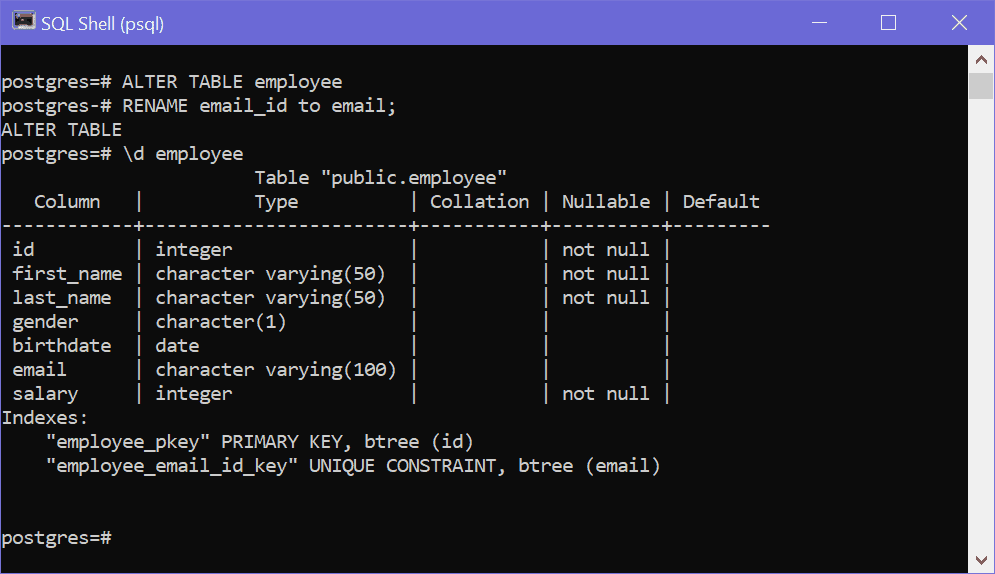
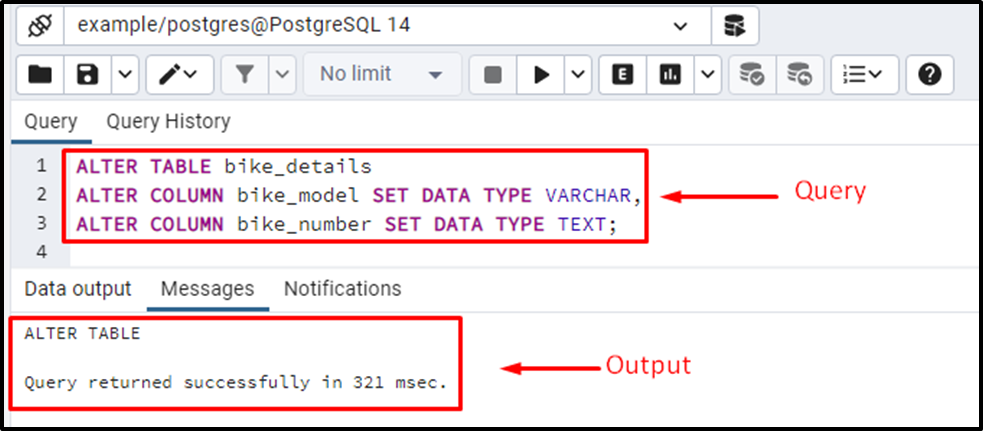


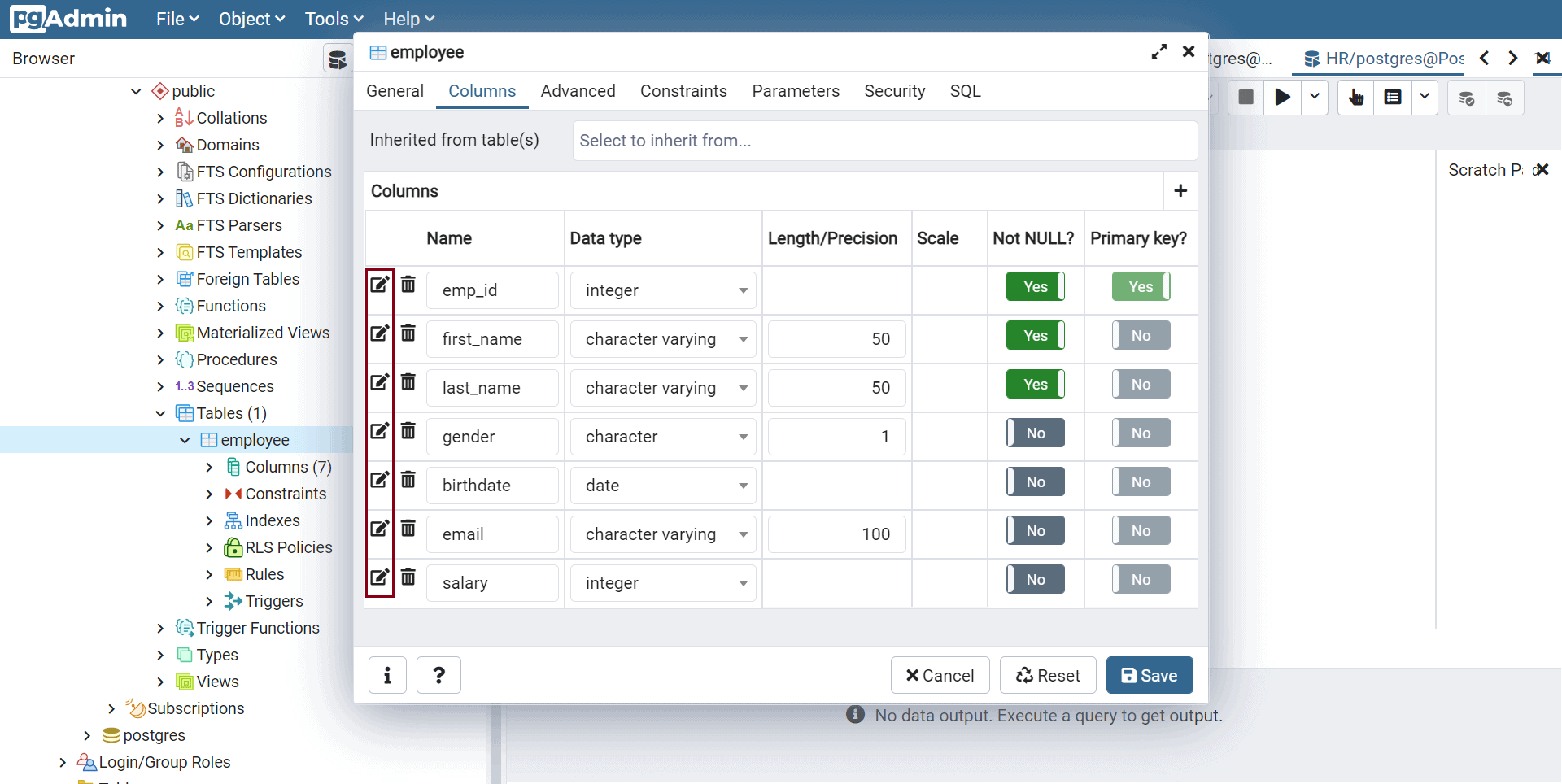



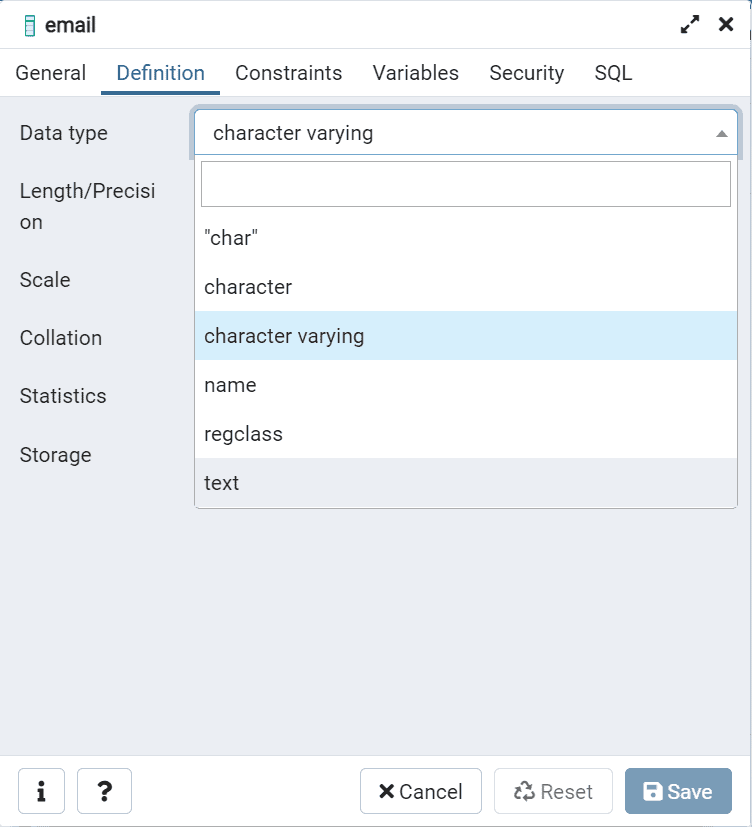







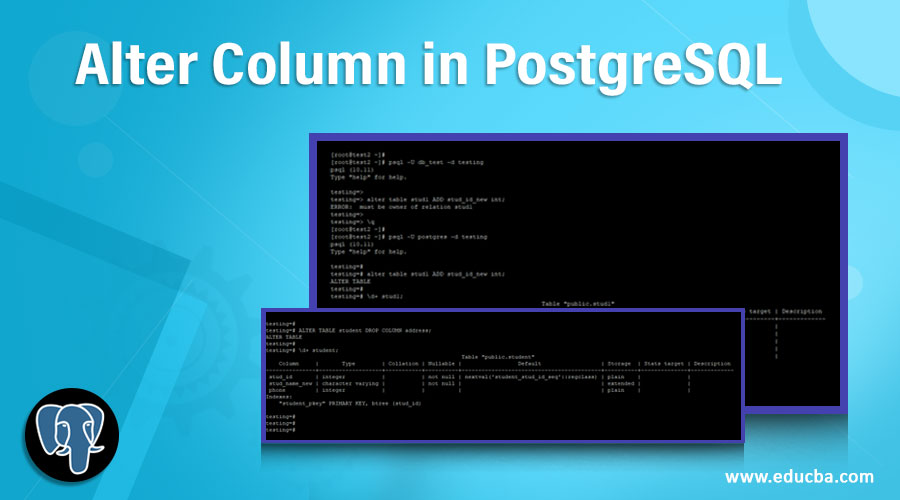


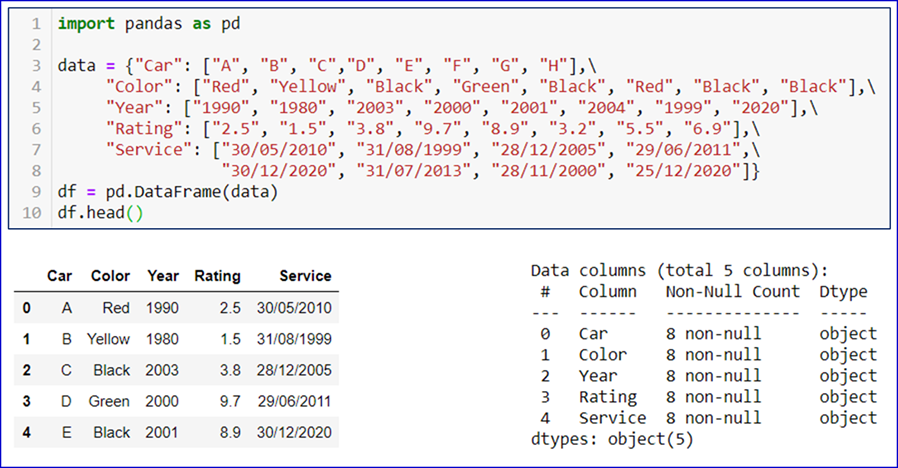


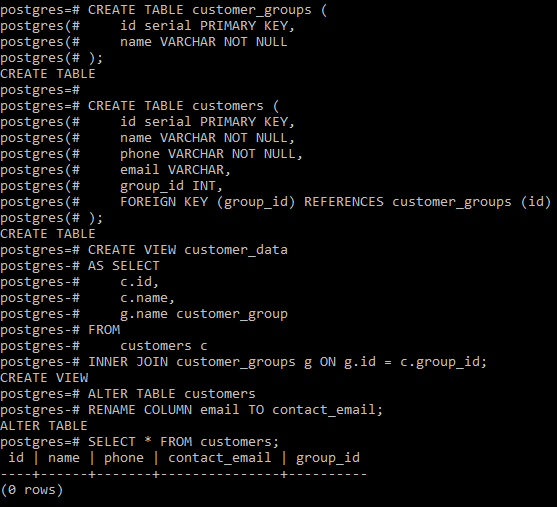







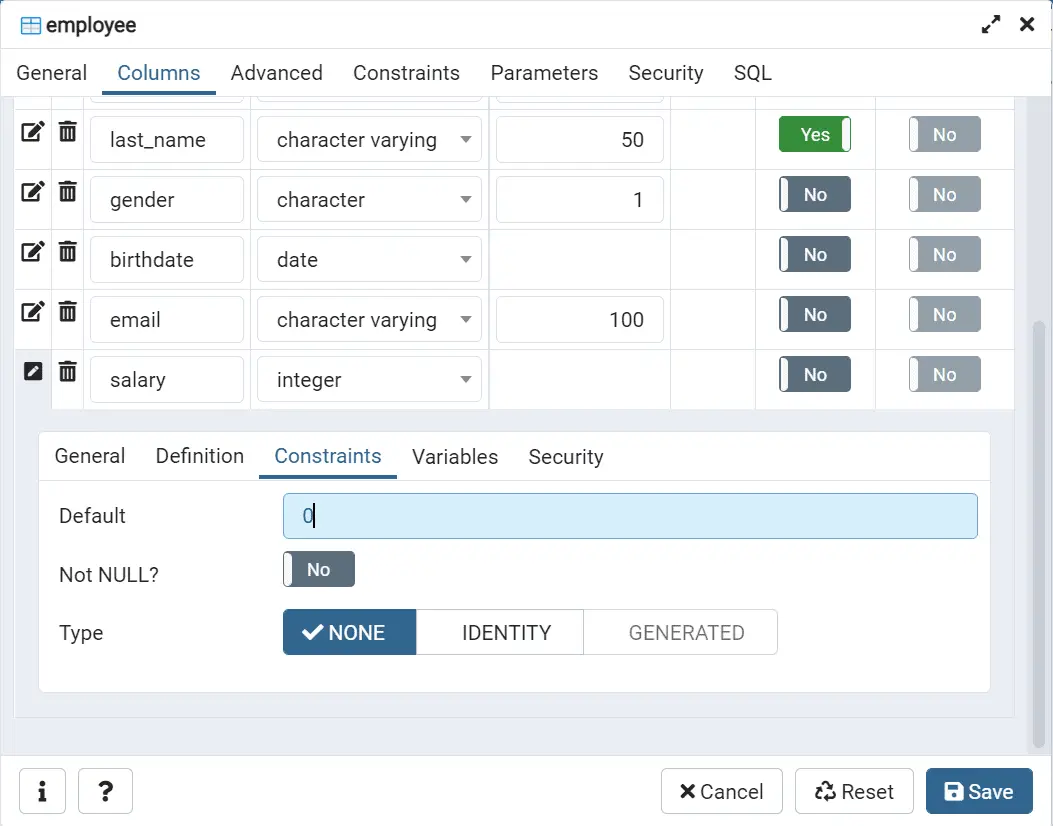









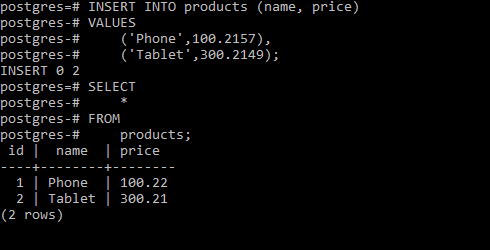



![PostgreSQL] Chỉnh sửa bảng CSDL (Alter Table) - VinaSupport Postgresql] Chỉnh Sửa Bảng Csdl (Alter Table) - Vinasupport](https://vinasupport.com/uploads/2019/09/PostgreSQL-Tutorial-Bang-groups.png)



Article link: postgresql change column type.
Learn more about the topic postgresql change column type.
- PostgreSQL Change Column Type: Step-by-Step Examples
- How to alter a column’s data type in a PostgreSQL table?
- Modify Column Type in PostgreSQL – TutorialsTeacher
- PostgreSQL – Change Column Type – GeeksforGeeks
- How to Alter Column Type in PostgreSQL – Command Prompt
- Documentation: 15: 5.6. Modifying Tables – PostgreSQL
- PostgreSQL – RENAME COLUMN – GeeksforGeeks
- How to Convert a String to a Number in PostgreSQL – Command Prompt
- PostgreSQL – Change The Type Of A Column, A Walkthrough …
- PostgreSQL Change Column Type – Javatpoint
See more: nhanvietluanvan.com/luat-hoc